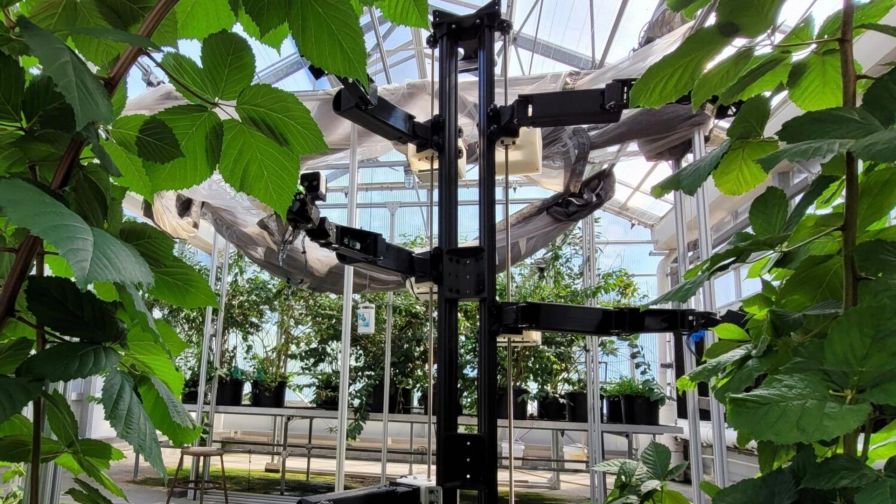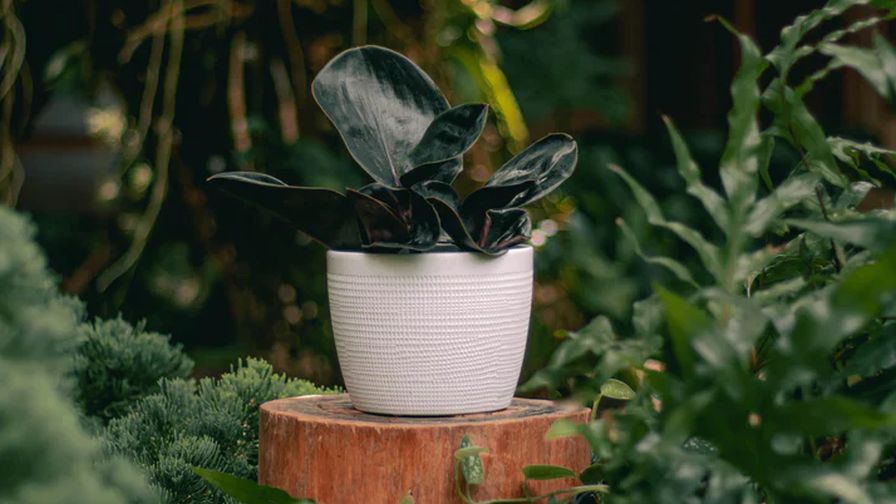The Ins and Outs of Biostimulants and What They Really Mean
Editor’s note: This is the second part a three-part series on the efficacy of biostimulants in the greenhouse. Special thanks to Ohio State’s Michelle Jones for compiling the information from a panel she led at Cultivate’21. You can find Part 1 here, and watch for Part 3 in late May.
Biostimulants are designed to enhance or benefit nutrient uptake, nutrient efficiency, tolerance to abiotic stress, crop quality, and yield in plants. So how can growers choose which type of biostimulant is right for their plants?
Dr. Michelle Jones, The Ohio State University DC Kiplinger Floriculture Chair, and a panel of industry experts addressed this and other questions during a discussion at Cultivate’21. The panel included Mark Freeman (Bioworks), Matthew Krause (Lallemand Plant Care), Troy Buechel (Premier Tech), and Blair Busenbark (Mycorrhizal Applications).
Keep reading for highlights from the discussion.
What can growers expect from biostimulants?
Jones: Biostimulants, which can include both microbial and non-microbial ingredients, can improve plant growth, health, and quality. Biostimulants improve macro- and micronutrient availability, which can increase nutrient uptake and result in larger, healthier plants. The application of biostimulants to greenhouse crops can lead to plants with increased resilience that are less susceptible to disease, but direct claims against pests or pathogens cannot be made by these products. Another benefit of biostimulants is increased tolerance to abiotic stresses. These include stressful environmental conditions like water deficits or extreme temperatures. The goal is that biostimulant use would allow growers to reduce other chemical and fertilizer inputs.
Busenbark: Biostimulants are additional components that are added to soils, soilless media, and to plant growing systems that provide non-nutritional components or those components that are not available to the plant within the growing system. These biostimulants being plant and animal biproducts, microorganisms, and other compounds that stimulate the soil microbiome, plant processes, and mitigate abiotic stresses to improve plant productivity in systems that are less than optimum. The healthier the plant, the more productive, the more resilient and more tolerant of pest infestations.
How does a biostimulant differ from a biopesticide or a biofertilizer?
Freeman: The definition(s) in the U.S. are currently being developed by the EPA and the Association of American Plant Food Control Officials (AAPFCO). Both entities have created draft definitions that are in the review/comment stages. The EPA is focusing upon claims related to plant growth responses, while AAPFCO is focused upon nutrient use efficiency and plant stress mitigation. A biofertilizer delivers a guaranteed analysis of plant nutrients that are derived from officially recognized biological sources which are frequently qualified as organic input materials. Beyond these eventual official definitions, it is important to remember that these biological product relationships will not confine themselves to our labels. The complexity of plant interactions with microbes and their environment will continue to be discovered and redefined as science brings more awareness.
Krause: Using the definitions for biostimulants from the 2018 U.S. Farm Bill and the Federal Insecticide, Fungicide, and Rodenticide Act (FIFRA), the biggest difference between a biostimulant and a biopesticide is that the benefits to crops claimed for biostimulant products may only be made around plant growth, nutrient availability or acquisition, stress mitigation, and/or overall yield improvement and not around pesticidal claims. Any product making disease, pest, or weed control, or growth regulation claims must be registered by EPA and each state where it will be sold, unless it is a product that has been determined by the EPA to be a Minimum Risk Pesticide Exempted from FIFRA registration. Interestingly, many microbial biopesticides have been found to have biostimulant effects on plants, though their primary purposes are for disease or pest control.
Krause: The term biofertilizer can have one of two meanings. The first meaning is as a biologically derived fertilizer, which are also called organic and organic-based fertilizers. These are plant nutrients bound to carbon that are typically drawn from organically approved or non-approved plant-, animal-, microbial- and bio-process-derived raw materials as well as organically approved mined minerals. Under this meaning, biostimulants are vastly different in that they do not actually contain significant levels of plant nutrients in their formulations.
The second meaning is as a microorganism-based product that helps the plant access insoluble nutrients in the soil or convert atmospheric nitrogen into plant-available form. Biofertilizer in used in this context is actually one type of biostimulant and should be referred to as such according to the 2018 Farm Bill definition.
Can you provide some guidance on how EPA regulation of biostimulants and PGRs will affect the industry?
Krause: If the product makes general claims about controlling growth, this is currently a slippery slope. Anything that claims plant growth regulation must be registered as a PGR; if it induces cytokinins or produces auxin, then it is a PGR. If there are any cidal (fungicidal, insecticidal, herbicidal, etc.) claims, then it is a pesticide and must be registered.
The current (2018) Farm Bill definition of a biostimulant describes biostimulants as substances or micro-organisms that stimulate natural processes to enhance or benefit nutrient uptake and nutrient efficiency. While these processes can lead to improvements in plant growth or health, biostimulants that contain mixtures of micro-organisms are not currently regulated to the extent that potential risks to human, plant and environmental health are assessed. There are genera of bacteria and fungi that have both beneficial and pathogenic species and strains. In addition, restricted entry intervals (REIs) and personal protective equipment (PPE) are established by EPA for each microbial bipesticide to protect workers from developing sensitivities or allergies to the microbe active ingredients and their metabolites in the formulations. REIs and PPE are currently not set by regulatory authorities for microbial biostimulants, though the potential for workers to develop sensitivities or allergies to them also exists. If we are applying one standard for biopesticides to determine the potential harms to humans, plants, and the environment, we should view biostimulants with the same lens. Users should know that these products are safe to apply and for consumers to handle or consume.
Busenbark: The regulation of biostimulants by the EPA would only work if each class or type of component is regulated individually. If the system tries to regulate the compounds as a group such as biostimulants, this regulation will never provide adequate measurement of the quality and safety of these technologies which are currently bunched together in this large biostimulant category. There has to be a moderation and understanding around the risks and benefits based on the component and application use pattern. Treating plant byproducts and organisms within the same category or under the same requirements will lead to confusion and misrepresentation that this regulation is trying to provide. Classifying organisms into one category will also lead to challenges to provide these quantifications and qualifications of those organisms for benefit and risk.
How should growers choose a biostimulant product?
Krause: First, it is important for the grower to determine what issues they would like to address with the product. Is the focus on increasing nutrient use efficiency, yield, or quality or improving stress tolerance? What should success look like?
With these things in mind, select only products:
- With claims that are clear in what they can do to address your specific issue(s)
- That provide original, science-based specific modes of action of each active ingredient
- That are approved by or registered with your state department of agriculture, environmental protection, and/or health
Also, you should avoid products:
- With vague, miraculous, “copycat”, and/or clearly exaggerated claims not backed up by independent trials
- Whose manufacturers or distributors make written, verbal, or implied disease control, pest control, or plant growth regulation claims without US EPA registration. This includes language such as “induces resistance”, “reduces disease”, “promotes plant defense”, “regulates or controls growth”
- Whose manufacturers or distributors compare their higher active ingredient levels or numbers in their products (often times at low cost) with specific active ingredients in key EPA-registered products
- Without proper, easily accessible safety data sheets and recent certificates of analysis available upon request.










